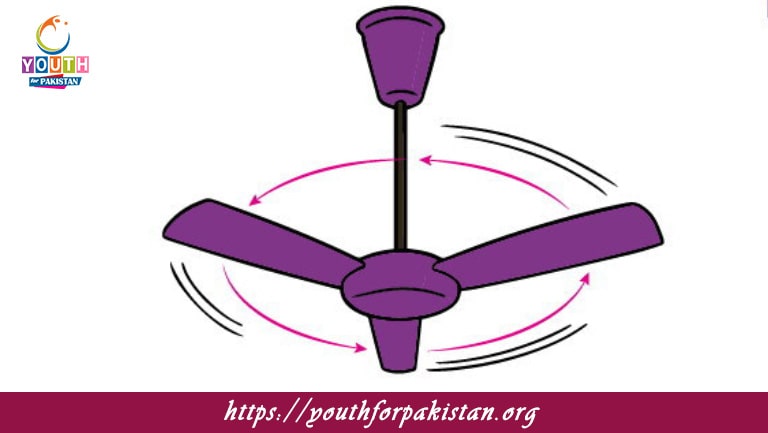Rotational And Circular Motion MDCAT MCQs with Answers

Welcome to the Rotational And Circular Motion MDCAT MCQs with Answers. In this post, we have shared Rotational And Circular Motion Multiple Choice Questions and Answers for PMC MDCAT 2024. Each question in MDCAT Physics offers a chance to enhance your knowledge regarding Rotational And Circular Motion MCQs in this MDCAT Online Test.
Rotational And Circular Motion MDCAT MCQs Test Preparations
What is the unit of angular velocity?
a) rad/s
b) m/s
c) m/s²
d) rad/m
The linear velocity of a point on a rotating object is given by the formula:
a) v = rω
b) v = ω/r
c) v = r²ω
d) v = ω²r
In uniform circular motion, the centripetal force is directed:
a) Outwards
b) Towards the center
c) Tangentially
d) At 45° to the velocity
What is the SI unit of moment of inertia?
a) kg/m²
b) kg·m²
c) kg·m/s²
d) kg/m
The angular acceleration of an object is defined as:
a) The rate of change of angular velocity
b) The rate of change of angular displacement
c) The rate of change of linear velocity
d) The rate of change of linear displacement
If a wheel is rotating at 2 rad/s, what is its angular velocity after 3 seconds if the angular acceleration is 1 rad/s²?
a) 3 rad/s
b) 4 rad/s
c) 5 rad/s
d) 6 rad/s
Which of the following is true for a rigid body in pure rotation?
a) All points have the same linear velocity
b) All points have the same angular velocity
c) All points have different angular velocities
d) The center of mass does not move
What is the angular displacement in radians for a full circle?
a) π/2
b) π
c) 2π
d) 3π
In circular motion, the direction of the centripetal acceleration is:
a) Same as the velocity
b) Opposite to the velocity
c) Perpendicular to the velocity
d) Along the radius
The frequency of rotation is defined as:
a) The number of revolutions per minute
b) The number of revolutions per second
c) The time taken for one complete revolution
d) The rate of change of angular velocity
What is the linear speed of a point on the rim of a wheel with radius 0.5 m rotating at 4 rad/s?
a) 1 m/s
b) 2 m/s
c) 4 m/s
d) 8 m/s
If the moment of inertia of a rotating body is doubled, keeping the angular momentum constant, the angular velocity becomes:
a) Doubled
b) Halved
c) Quadrupled
d) Unchanged
The time period of a simple pendulum depends on:
a) Length of the pendulum
b) Mass of the bob
c) Amplitude of swing
d) Both mass and amplitude
What is the direction of the angular velocity vector in rotational motion?
a) Along the axis of rotation
b) Perpendicular to the plane of rotation
c) Opposite to the direction of angular displacement
d) In the direction of the applied force
The work done in moving a body in circular motion with constant speed is:
a) Maximum
b) Minimum
c) Zero
d) Infinite
If the radius of a circular path is halved, the centripetal force required to maintain the same speed will:
a) Remain the same
b) Be halved
c) Be doubled
d) Be quadrupled
In a uniform circular motion, the net force acting on the object is:
a) Zero
b) Directed along the tangent
c) Directed towards the center
d) Directed away from the center
The torque acting on a body depends on:
a) The force applied and the perpendicular distance from the axis of rotation
b) The velocity and radius
c) The mass and acceleration
d) The force and the angular velocity
The rotational kinetic energy of a rotating body is given by:
a) 1/2 mv²
b) 1/2 Iω²
c) 1/2 mgh
d) 1/2 kx²
If an object is in rotational equilibrium, the net torque acting on it is:
a) Maximum
b) Zero
c) Minimum
d) Infinite
The centripetal acceleration in circular motion is proportional to:
a) Radius and velocity
b) Radius and mass
c) Square of the velocity and inversely proportional to the radius
d) Square of the velocity and directly proportional to the radius
Angular momentum is a vector quantity and is given by the formula:
a) Iω
b) mvr
c) mv²/r
d) mgh
A point moving in a circle with a constant speed has:
a) Constant velocity
b) Constant acceleration
c) Constant kinetic energy
d) Constant angular displacement
If the angular velocity of a rotating body increases, its angular acceleration is:
a) Positive
b) Negative
c) Zero
d) Undefined
The moment of inertia of a solid sphere about its diameter is given by:
a) 2/5 MR²
b) 2/3 MR²
c) 1/2 MR²
d) 1/5 MR²
If a cyclist doubles their speed while traveling in a circle, the centripetal force needed becomes:
a) Half as great
b) Twice as great
c) Four times as great
d) Eight times as great
What is the angular velocity of an object that completes 3 revolutions per second?
a) 2π rad/s
b) 3π rad/s
c) 6π rad/s
d) 9π rad/s
For a rigid body in rotational motion, the relation between angular velocity (ω) and time (t) is given by:
a) ω = αt
b) ω = ω₀ + αt
c) ω = ω₀ – αt
d) ω = ω₀/αt
A disk rotates with a constant angular velocity. Its angular acceleration is:
a) Zero
b) Increasing
c) Decreasing
d) Constant
The kinetic energy of rotation for a disk rotating about an axis through its center is:
a) (1/2)Iω²
b) (1/3)Iω²
c) (1/4)Iω²
d) (2/5)Iω²
In rotational motion, if the moment of inertia is decreased and angular momentum remains constant, the angular velocity:
a) Decreases
b) Increases
c) Remains the same
d) Becomes zero
The point at which the whole mass of a body can be considered to be concentrated for rotational motion is known as:
a) Center of mass
b) Center of gravity
c) Center of rotation
d) Axis of rotation
If a wheel rotates through an angle θ in time t, the average angular velocity is:
a) θ/t
b) t/θ
c) θt
d) θ²/t²
The rotational inertia of an object depends on:
a) Mass and velocity
b) Mass and the distribution of mass around the axis
c) Force and distance
d) Mass and distance from the center of mass
What is the centripetal force required for a car of mass 1000 kg to move at 20 m/s in a circular track of radius 50 m?
a) 2000 N
b) 4000 N
c) 8000 N
d) 16000 N
An object rotating with constant angular velocity has an angular displacement that:
a) Increases linearly with time
b) Decreases linearly with time
c) Remains constant
d) Increases exponentially with time
In a uniform circular motion, the velocity vector is:
a) Constant in magnitude but changing in direction
b) Changing in magnitude but constant in direction
c) Constant in both magnitude and direction
d) Changing in both magnitude and direction
The rotational kinetic energy of a body is directly proportional to:
a) Angular velocity
b) Moment of inertia
c) Square of the angular velocity
d) Square of the moment of inertia
If a particle moves in a circle with constant speed, which of the following is not true?
a) Its velocity is constant
b) It has constant kinetic energy
c) It has constant angular velocity
d) It has constant acceleration
The radius of gyration of a body rotating about an axis is:
a) The distance of the center of mass from the axis of rotation
b) The square root of the ratio of the moment of inertia to the mass
c) The distance at which the entire mass can be considered to be concentrated
d) The distance from the axis at which the velocity is maximum
If you are interested to enhance your knowledge regarding Physics, Chemistry, Computer, and Biology please click on the link of each category, you will be redirected to dedicated website for each category.





